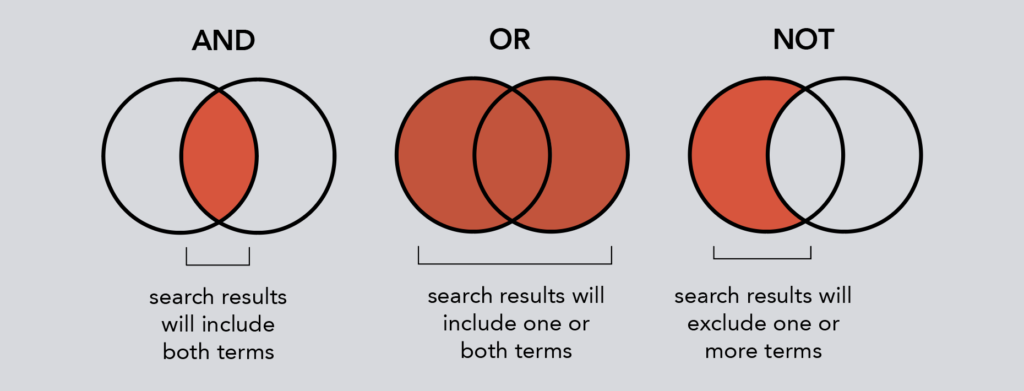While some of these recommendations may seem basic, but Google is the best search tool to start with for online research. Utilizing this step-by-step overview of how to master searching will help you better identify topics and terms for looking for more information.

Boolean searching is the best and most accurate search process; it enables the use of stringing together words and phrases using the following:

AND
Searches for two terms
EXAMPLE: murder AND 1990, missing child, missing AND child
NOTE: If you enter two terms and don’t use AND it will assume that there is an AND between them. The ‘+’ sign and an ampersand ‘&’ can also be used to replace AND when searching.
OR
Broaden a search to find results which include one or more terms by separating terms with the uppercase word OR
EXAMPLE: Police OR “Police Officer,” “unsolved murder” OR “cold case”
NOT
Search results will exclude findings containing a term that is accompanied by NOT
EXAMPLE: (Facebook OR Twitter) NOT Pinterest, “reported missing” NOT missing NOT found NOT “presumed dead”
NOTE: The ‘!’ sign and ‘^’ can also be used to replace NOT when searching.
Quotation Marks “ ”
Searches for precise terms or phrases
EXAMPLE: “cold cases in Denver,” “missing child,” “camera footage,” “East Area Rapist”
Parentheses ( )
Groups similar for searching
EXAMPLE: (cold cases) AND (2010), “missing women” AND (national parks), (found body OR crime scene)
You can also head to www.GoogleGuide.com for a comprehensive guide on searching the internet using Google. We’ve compiled a Citizen Detective guide to help you sharpen your skills, download it today to build your digital toolkit and moving up in the detective ranks along with your new Googling skills!
